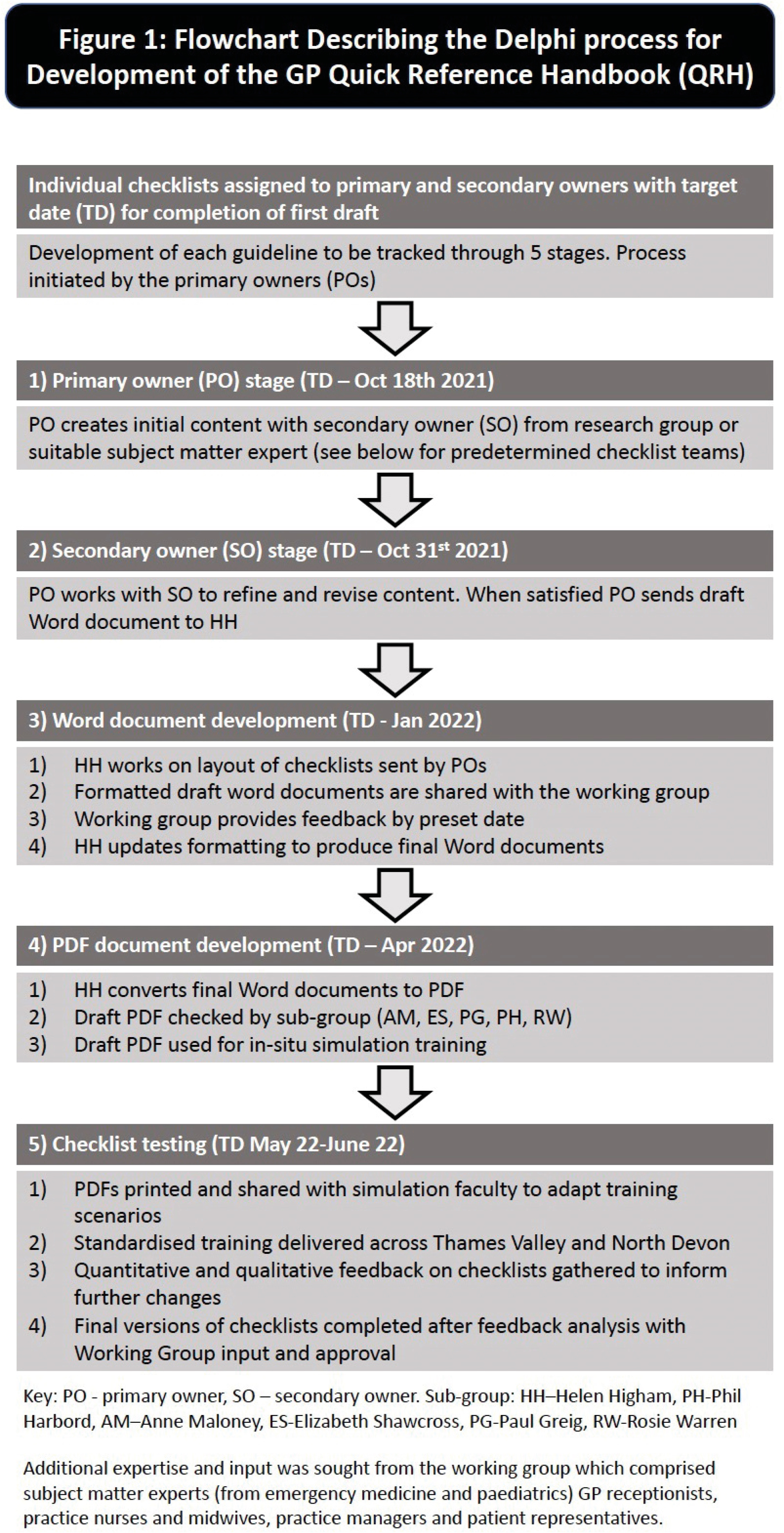
Emergency presentations in General Practice (GP) are increasing, however teams may go months without having to manage one. While guidelines exist for emergency management, most are written for hospital practice, and applicability to primary care is limited. Similarly, simulation training to support teams in the management of emergencies is common in hospital but not in family medicine. An audit of GPs in the Thames Valley revealed significant concerns about providing care for acutely unwell patients and highlighted the conditions they were most worried about.
We used a Delphi process with a panel of experts to design novel checklists for treating emergency conditions in primary care (Figure 1). Human factors principles informed the design of a GP Quick Reference Handbook (QRH) [1,2] and a review of the literature ensured we had the most up to date treatment protocols. Guidance from GPs informed pragmatic recommendations for treatment where limited resources are available. We used in-situ, low-fidelity simulation to train primary care teams to use the QRH. Sessions (lasting 3 hours) were delivered by experienced faculty at 15 practices. Feedback was collected on the design and content of the checklists and the simulation training.


Seventeen checklists were produced: 14 to guide clinical actions in acute conditions (e.g. croup, anaphylaxis); one ‘key basic plan’ to be used when the diagnosis is unclear; a checklist to aid non-clinical staff; and an SBAR (Situation/Background/Assessment/Recommendation) guide for handover of key details to ambulance retrieval teams. The complete QRH can be printed in hard copy or accessed on an electronic device. Feedback on the QRH from multidisciplinary teams in primary care was universally positive. The simulation-based training was extremely popular with 100% agreeing they would like it embedded as normal practice in primary care.
Checklists are a vital component of safe work processes in high reliability organisations and, more recently, in secondary care settings in healthcare. Emergency presentations are not easy to manage in GP environments and checklists could enhance team performance in rapidly evolving, uncertain circumstances [3]. We have developed the first QRH for primary care and used it in simulation-based training in 15 GP practices, but further work is required to analyse any improvements in team performance. In order to ensure sustainability of the project, we are working with regional ‘learning hubs’ for primary care to embed a train the trainer programme and share the QRH nationally.
1. Gawande AA. The Checklist Manifesto. London: Profile Books; 2010.
2. Anaesthetists. Anaesthesia emergencies: Quick reference handbook. https://anaesthetists.org/Home/Resources-publications/Safety-alerts/Anaesthesia-emergencies/Quick-Reference-Handbook [Accessed on 26/06/2022]
3. Hales BM, Pronovost PJ. The checklist-a tool for error management and performance improvement. J Crit Care. 2006;21(3):231–5.